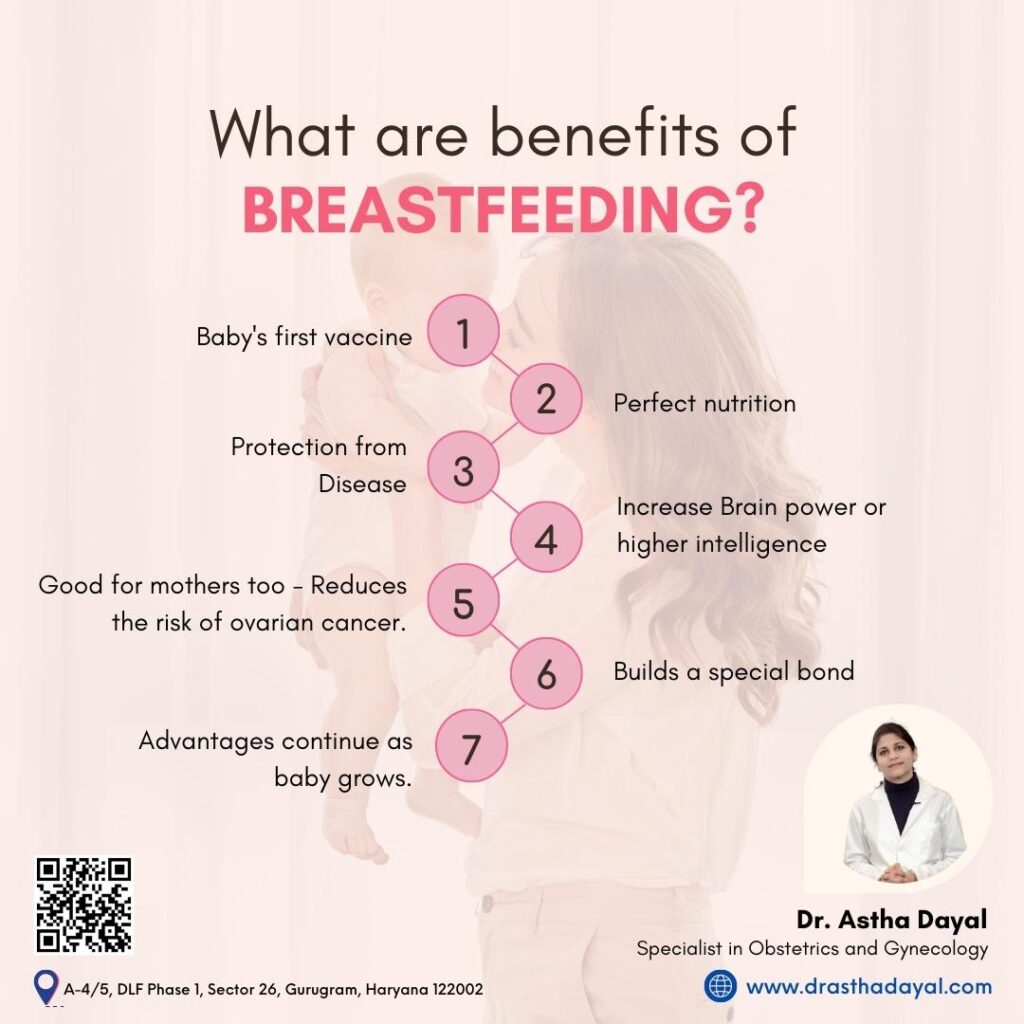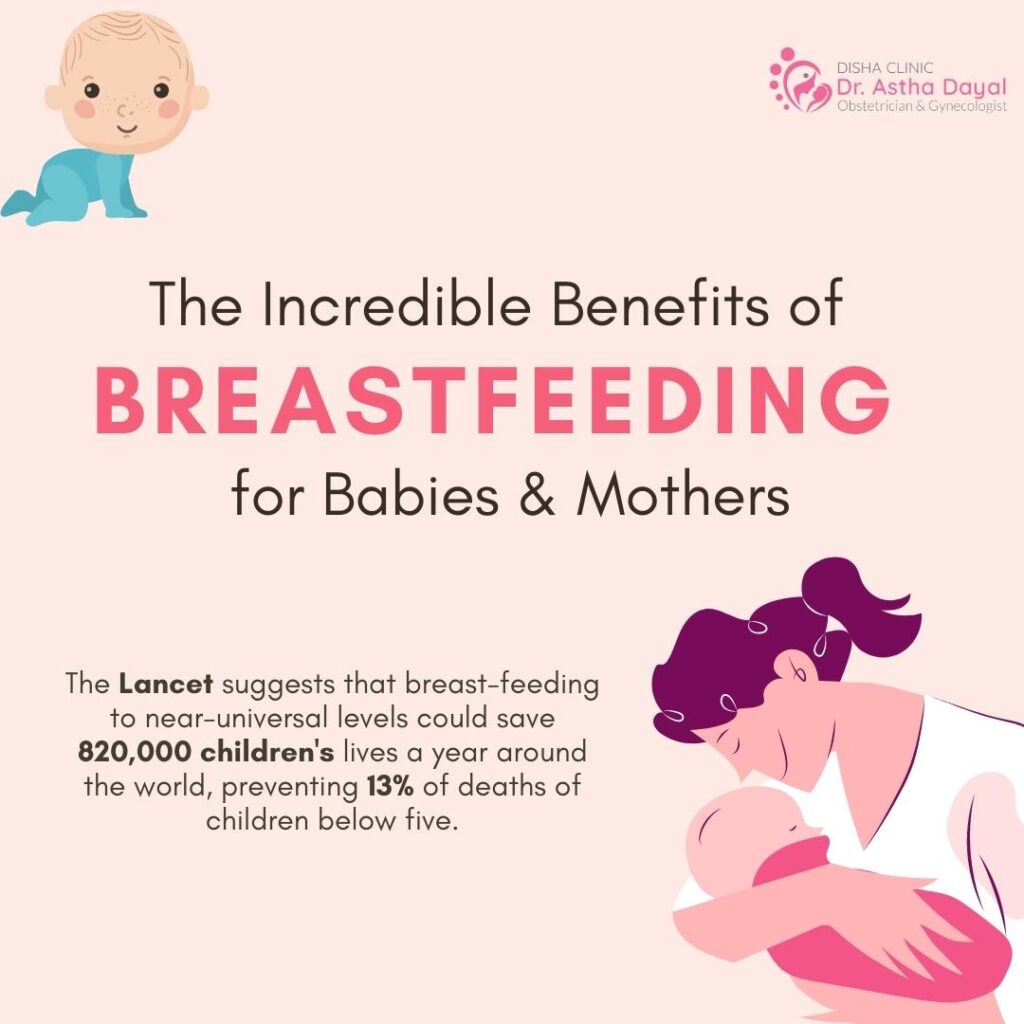Breast milk is one of the best gifts a mother can give to her baby. A new comprehensive report published in The Lancet suggests that breast-feeding to near-universal levels could save 820,000 children’s lives a year around the world, preventing 13% of deaths of children below five.
Benefits to the baby
- Breast milk may be regarded as the baby’s first vaccine. It protects the infant from diseases and builds immunity.
- Up to one third of respiratory infections and almost half of all diarrhea episodes could be avoided in low- and middle-income countries through breast-feeding.
- It cuts the risk of sudden infant deaths by more than one-third In the high-income countries
- Children breast fed for a longer duration has been found to have higher intelligence
Benefits to Mother
- It could prevent about 20,000 extra deaths from breast cancer each year.
- It also reduces the risk of ovarian cancer.
- It helps losing pregnancy pounds much faster.


How to Breastfeed successfully?
Although breastfeeding is though to be natural and easy, but its mostly not! Most women face issues during breastfeeding.
You should know when to ask for help or consult your doctor for the same.
Position
- Make sure that both the baby and you’re comfortable.
- You should have your back well supported and then get your baby in position.
- Extend your forearm and hand to support the baby’s neck, spine, and bottom
- The baby’s nose should be opposite your nipple and his head and body should be in a straight line so that he can swallow easily. Also his neck, shoulders and back should be well supported.
Latching
- The baby should be latched on smoothly; his lower lip should be as far away from the base of your nipple as possible.
- His head should be tilted back slightly, and the area around the nipple should also enter the mouth.
Common problems faced by breastfeeding moms:
Pain
The most common reasons for pain during breastfeeding are
Thrush –
Thrush there could be fungal infection in the milk ducts of the breast, causing pain, more towards the end of feeding. You might find spots of cottage cheese or milk curds in the baby’s mouth and on your nipples.
Milk letdown
Milk letdown i.e. the discomfort due to the milk filling up the breast. Proper supportive bras, relaxation techniques, and occasional painkillers usually relieve it.
Mastitis
Mastitis meaning inflammation of the breast. It feels red, hard, sore, hot or swollen and you may also notice a lump, caused by milk in the breast tissue. There may be flu-like symptoms, such as chills, headaches, exhaustion and low-grade fever. You need to contact your doctor urgently if you are having these symptoms.
Breast engorgement
Breast engorgement : The sudden increase of milk in the breast a few days after delivery can cause the breast becoming hot, swollen and engorged. It is generally relieved with feeding. While this can be painful in the early days, the discomfort should pass once your baby starts feeding. In case the baby has trouble latching on with engorged breasts, expressing some milk by hand or using a breast pump would help. Also, hot fomentation by putting warm damp towels on your breasts before feeding and cold towels or cabbage leaves after feeds helps reduce the engorgement
Sore nipples
Sore nipples – This can be avoided by latching the right way, i.e. the baby should not just nibble at the nipples, a part of the breast should also be in his mouth. A hot wet cloth can soothe sore nipples. Keep nipples moisturized after feeding by nipple creams/lanolin/breast milk itself and avoid washing them with soap.
Not enough milk
Most mothers have the natural capacity to produce milk sufficient for the baby. Despite this most mothers complain of not having enough milk. You must remember that the stimulus for milk production is by the suckling of the baby and emptying of the breast. If the baby were given top feeds, the breast milk would automatically reduce.
To increase the milk supply,
Put the baby to breast more often, during the day and night, if the baby doesn’t latch that often, pump the breast to stimulate milk production.
- Have a nutritious diet
- Have enough fluids, don’t dehydrate yourself
- Have enough rest
Also, remember, every child has a different feeding pattern. Some baby’s may need to be fed every 40 minutes and some not even up to 3 hours.
As long as the baby is active and is gaining weight appropriately, you are doing a good job!
Returning to work
Companies use many solutions to give feeding mothers time and a private and clean place at work for feeding/expressing milk at work.
A variety of permanent, flexible, and even mobile space options provide support, privacy, hygiene and amenities even when space is limited.
Schedules may be managed in creative ways so that women can have enough time to express milk.
Expressing breast milk
- A good time to start expressing is when your milk supply is well established which is usually at around the six to eight weeks after delivery. Expressing after the first feed of the day is helpful.
- You can either express by hand or by manual or electric breast pumps or a combination of both compliments each other and makes it similar to your baby feeding.
Breast milk can be stored at room temperature for up to six hours or in the fridge for up to two days.
It is important to know that breastfeeding is not easy and doesn’t come naturally to most mothers. A nursing mother needs plenty of support and encouragement.
Don’t hesitate in seeking help from a nurse, doctor, family member, or friend, to get over possible bumps in the road.



